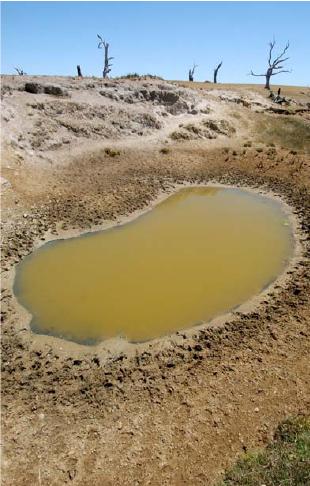Water issues and environmental flows
Words and Images By Alison Pouliot

Degraded agricultural areas in the mid reaches of the Moorabool
Dramatic catchment modification and subsequent loss of vegetation have been the cause of most of the Moorabool's problems. Native vegetation removal has triggered a myriad of issues including increased salinity (at times exceeding 1200EC); increased sedimentation and inputs of nutrients and chemicals due to greater run-off; reduced shading and subsequent increases in water temperature; loss of organic input and weed invasion (especially willow infestations). There are also more than 15 on-stream storages which form barriers to native fish migration. The Moorabool's flow regimes have been highly regulated for urban water supply for Geelong and Ballarat which consume approximately 70 percent of the total flow (CCMA).
Due to the stresses of water harvesting for urban and rural supply, as well as several years of low rainfall, the river doesn't receive the required environmental flows (from releases from Lal Lal and Bostock Reservoirs) to sustain a healthy ecology. As a result, many reaches of the river don't have continuous flow but just a series of weed-choked stagnant pools, with little habitat connectivity between reaches. Some reaches (such as those between Batesford and Fyansford) haven't flowed for several years. This shortfall in environmental flows is believed to be in the vicinity of 20,000ML. Even when the river does receive flows, controlled releases of water from reservoirs are often problematic as they reverse natural seasonal flow, temperature and sediment transport regimes. This can subsequently have negative effects on native fish and invertebrates, many of which rely on temperature cues for reproduction.
So in a nutshell, the situation for the Moorabool is not looking good, but fortunately there are some devoted advocates trying to change this situation.
